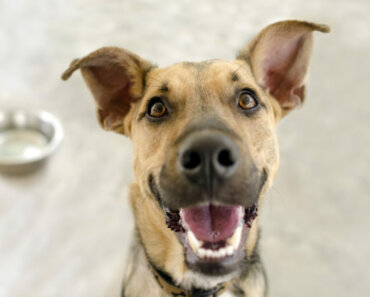
For original article click here
Bringing home your dog is the start of your relationship together. There’s bound to be some bumps in the road for new dog owners, but you can make things a lot easier for both you and your pet by doing certain things to build a solid foundation for all those years to come.
The journey to becoming the best dog owner starts before you even bring your new furry friend home. It takes a lot of research to find the right dog for your family and environment. New dog owners may think they want a certain breed based on the appearance of the dog, but that’s the worst way to select a new pet.
These must-know tips for new dog owners will help you in the decision making process. You’ll also find tips for preparing your home and family for the new arrival, as well as advice on how to care for your dog throughout the stages of her life.
ALSO READ: 11 Important First Time Dog Owner Tips for Future Adopters
1. Do a Background Check
It’s important for new dog owners to find a breed that will fit with their lifestyle and environment. If possible, research your dog’s breed or the breeds that are in her family background. It might tell about her specific needs and temperament. Ask about her medical history, and get as much documentation as you can.
Spending some time with your dog’s family, both the canine and the two-legged variety, can give you some idea of what you might expect when it comes to behavior. Of course, this isn’t always possible. If you’re really curious or don’t have access to your dog’s previous owners, you can purchase a dog DNA testing kit that can give you information on your dog’s breed and any genetic conditions she may have.
If you do have the opportunity to speak with your dog’s previous owners, these are some questions you might want to ask:
- Has she or her parents had any health problems?
- How old is the dog?
- What kind of temperament does she have?
- How much activity is she used to, and how much does she need?
- What kind of training has she had?
- What kind of discipline techniques work?
- Has the dog had experience with other animals or children?
- How much time does she spend inside or outside?
- What kind of food has she been eating and how much?
- Does she have any special likes or dislikes?
- Has the dog been spayed or neutered?
- Has she been treated for parasites and when?
- Is the dog up to date on her shots?
ALSO READ: Dog DNA Kit Comparison – Embark vs Wisdom Panel
2. Keep Your Records Handy
If your dog is from a shelter, you might not know a lot about her background. Get what you can, but now that she’s found her forever home. You’ll need to keep track of certain things from now on, including:
- When you got her, andor how old she was
- Trips to the vet, health problems, vaccinations and medications
- Behavior in different situations, like at the groomers or a kennel
This information should be kept in a way that makes it easy to share with your vet or anyone else who might spend time with your dog, like a house-sitter. It’s often easier to keep it on your phone so you’ll always have it with you.
3. Book a Vet Check-up
 Don’t wait for a problem to find a veterinarian. It isn’t something you want to do when you’re pressed for time, and you might not want to go with the first one in the phone book or whoever’s closest.
Don’t wait for a problem to find a veterinarian. It isn’t something you want to do when you’re pressed for time, and you might not want to go with the first one in the phone book or whoever’s closest.
Look for a place where the technicians are certified and licensed with good online reviews. Ask about prices and common pet-care practices too, like pain relief and if students might use your pet for practice.
4. Get the Right Dog Supplies
Research what you really need for your dog based on age, breed and activity level. There are millions of products on the market and a lot of people out there happy to sell you something, so make your purchasing decisions wisely. Start with the basics.
Your dog will need:
- a leash
- a collar andor harness
- a few toys, especially for chewing
- bowls for food and water
- puppy pads for accidents or indoor training
- food and treats
- grooming items
- a place to sleep
- a safe place to get outdoor exercise
RELATED: 6 Essential Supermarket Dog Supplies All New Pet Owners Need
5. Take Advantage of a Dog Crate
It might look like a cage to you, but good metal or soft dog crate is a den for your pooch. It can be used for training and to prevent behavior problems, but it should never be used as a punishment. Dogs don’t want to go to the bathroom in their den, so it’s great for house training and to stop them from destroying things at night or when you aren’t home.
If you need to travel, a crate can be a safe, familiar way to transport your dog in a car or other vehicle too. Used too much though, or the wrong way, and your dog will be afraid of her crate.
Your crate should be large enough for your dog to stand up in and turn around at her adult size, but not so large that she can go to the bathroom at one end and sleep at the other. If she’s a puppy, you can always block part off.
The crate also needs to be a place to rest, not a punishment or place of confinement. Don’t leave your dog in the crate too long. Puppies under six months, or dogs who aren’t house trained, shouldn’t be crated for more than three or four hours. If the dog seems depressed, anxious or hyper, she might need more exercise or attention. You may need to look into a pet sitter or doggy daycare.
VIDEO GUIDE: How To Crate Train A Dog or a Puppy
6. Help Your Dog Adjust to Seasonal Changes
Samantha has done a podcast with a veterinarian discussing how the needs to a dog change with seasons, particularly their nutritional requirements, but many pet owners are not aware of this. But feeding isn’t the only change to watch out for.
Your dog’s hair determines not only her grooming needs, but how you need to prepare for changes in the weather. Dog sweaters aren’t just cute little fashion items, although some new dog owners may think so. Short-haired and some smaller dogs need help to deal with the cold, and some dogs are at risk for overheating outside in the summer.
Other apparel items, like jackets and boots, may also be a necessity if you live in a colder climate. You’ll also need to consider the weather in your region when deciding on whether or not to leave your pet outside for extended periods of time. Based on the climate, you may need a well insulated dog house, an outdoor kennel, or an awning for shade.
7. Pick the Right Dog Grooming Items
You’ll need a toothbrush, and you’ll have to get your dog using it. As much as you might wish there was a shortcut, plaque sprays, dental water additives and chew treats aren’t adequate replacements. If you don’t even know how to start brushing dog’s teeth, ask for your veterinarian’s help.
You’ll need the right brush for your dog’s hair too. Some tasks can be outsourced to a professional groomer, and that might be easier for nail clipping, washing, shaving and trimming. They have tools and expertise that most dog owners don’t, especially if this is your first dog.
8. Expertise in Reading Dog Food Labels
Your dog’s diet should fit her age, breed, size and activity level. Finding high-quality food can be a real challenge though. More than half of all dog owners find their dog’s nutritional needs more confusing than their own, according to a survey by Purina.
Dogs with diets that are full of grains, potatoes and byproducts, are generally not very healthy. Just because it says natural or grain-free on the label, that doesn’t make it healthy. It could be full of peas, lentils and chickpeas, which aren’t any better.
Carbohydrate diets spike blood sugar, glucagon and cortisol, causing obesity and diabetes. The high temperatures used to make such foods adds cancerous byproducts too. This has driven many dog owners to try raw food diets, but they can be a health hazard for the human owners because it can spread bacteria from uncooked meat around the home.
Preparing a home-made diet isn’t easy either, and inexperienced new dog owners may actually leave their pet with nutritional deficiencies by cooking the wrong recipes. The wrong ingredients can also make your dog sick. Ask your vet for advice, or better yet, seek the guidance of a canine nutritionist. You can also do your own research on the dog food brands you’re considering. Be sure to find out:
- how it’s made
- where it’s made
- what ingredients are used and where they are sourced
- how much is appropriate for your dog’s breed, size, age and level of activity
9. Know Animal Laws and Bylaws
New dog owners may not realize that registering your dog is mandatory in many states, so you may need a pet licence.
You also might consider microchipping or registering your dog with a recovery service. Knowing the laws and bylaws that apply to dog owners in your area can save you a lot of trouble down the road.
READ THIS: 8 Laws All Dog Owners Should Be Aware Of
10. Assume Your Dog Isn’t House Trained
You don’t want to depend on the last owner’s honesty. Skills are sometimes lost when dogs are under stress or in a new environment too. It’s better to assume that you and your dog are going to need to learn the rules of house training together.
You can do this two different ways:
- reward the dog for doing what you want
- prevent mistakes from happening by being proactive
These same principles apply to any kind of dog training, actually. Take the dog out regularly during the day, so both of you get into a set routine. Generally, you can expect your puppy to “hold it” for a number of hours equal to how many months old she is, or up to 4–8 hours for an older dog.
To begin, you’ll want to make a habit of taking the dog out at these times (at least):
- as soon as you get home
- after eating
- after naps
- before playing
- before bed
VIDEO GUIDE: How To Housetrain An Adult Dog or Puppy
11. Dog Training Isn’t Just for Fun Tricks
New dog owners need to start basic obedience training, like learning to sit and stay, when the dog is just 8-10 weeks old. Ideally, it should begin as soon as you bring your new pet home. For the best results, practice regularly, like:
- when you come home
- before eating
- before going outside
This will help the dog learn basic manners, like not begging or jumping up on people. Teaching your pet to sit when you open the door can keep her from running outside unpredictability, too.
Behavior problems are the most common reason for re-homing or putting a dog down, but the problem often starts with the owner. It’s up to you to teach your dog how to behave and to reward her for doing what you want.
Taking 10–15 minutes every day to train your dog will make both of you happier in the long run. Don’t think of it as a chore. It can be quality time together.
12. Start with Sensible Expectations and Rules
If your family will be new dog owners, spend some time learning about dog behavior, discipline and training. Decide with everyone in the house:
- what the rules for the dog are
- how to deal with bad behavior
- how to reward good behavior
- what kind of discipline will be used
- who is responsible for what and when
VIDEO GUIDE: How To Train A Dog Basic Commands
13. Set a Regular Routine with Specific Times
Dogs need activity and exercise every day. As pack animals, they aren’t meant to be alone for too long. Schedule time for walking, playing, training and just spending time together with every member of the family.
It will help with behavior issues too. A bored, isolated dog is only going to cause problems. The most proactive thing you can do is to make sure activity and social needs are being met.
14. Enroll Your Dog in Obedience School
New dog owners have no need to reinvent the wheel. Signing your dog up for obedience class is probably the easiest way for you both to learn together, and it will give you the skills you need to cope with different situations.
It will also help to socialize your dog to be less afraid of strangers and other animals. Obedience classes aren’t just for puppies or young dogs either, and it’s a fun thing to do together that helps build your bond.
15. Know When You Could Use Some Help
Learning about your dog is a life-long adventure that doesn’t end after the first few months. No one likes to be taken for granted in a relationship, even dogs. Don’t wait for problems to become ingrained.
If you aren’t happy, it’s up to you to do something about it. Ask your veterinarian, dog groomer, trainer or another dog owner for advice, or read up on the subject.
READ NEXT: You’ve Adopted A Puppy. Now What?



























